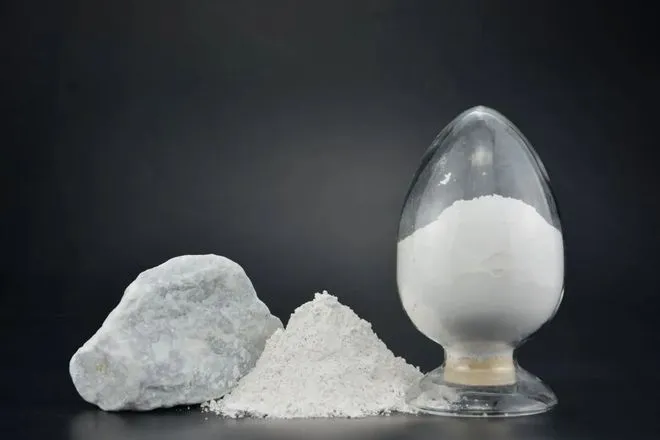Calcium carbonate is a widely used filler in plastics. It comes in two main forms: light calcium carbonate (precipitated calcium carbonate) and heavy calcium carbonate. Light calcium carbonate is produced chemically, while heavy calcium carbonate is made by mechanical crushing and grinding. Their densities are similar—2.4–2.6 g/cm³ for light calcium and 2.6–2.9 g/cm³ for heavy calcium. The key difference is in their apparent density, which affects how they settle in volume. Light calcium typically has a sedimentation volume above 2.5 mL/g, while heavy calcium ranges from 1.2 to 1.9 mL/g, depending on its crystal form and chemical composition.
Light calcium carbonate particles are usually date pit-shaped, with a long diameter of 5–12 μm, a short diameter of 1–3 μm, and an average size of 2–3 μm. Without surface treatment, these particles often clump together into clusters after drying. National standards assess light calcium quality based on sieve residues at 125 μm and 45 μm, which does not fully reflect particle size and distribution.
During the crushing and grinding of heavy calcium carbonate, particle sizes vary, creating a distribution from small to large within a range. Sorting allows us to control the maximum powder size and particle size distribution to suit plastic filling needs.

When comparing untreated light and heavy calcium fillers:
1. Output Differences:
Substituting heavy calcium for light calcium can affect the product’s length or area. Heavy calcium may result in a shorter or reduced area for the same weight of raw materials, potentially leading to a decrease in product value. For instance, tests on ultra-fine heavy calcium-filled PVC pipes show a 4% increase in weight compared to light calcium. In sandwich foam PVC pipes, the density of pipes filled with heavy calcium ranges from 1.05 to 1.12 g/cm³, compared to 0.96 g/cm³ for light calcium, showing increases of 9% to 17%. Without special measures, replacing light calcium with heavy calcium may negatively impact processing companies.
2. Price:
The price of heavy calcium varies significantly by particle size and distribution. For instance, prices for 1250 mesh, 800 mesh, and 400 mesh heavy calcium can differ by 2 to 4 times from the same manufacturer. Light calcium is widely available and generally more cost-effective. Heavy calcium, often transported from regions like Guangxi, Sichuan, and Northeast China to North China and coastal provinces, does not offer a price advantage over light calcium, except for the 400-mesh product. Thus, heavy calcium is not competitively priced compared to light calcium, even if performance and size are comparable.
3. Impact of Particle Size and Distribution on Filled Plastics:
The finer the particle size of heavy calcium, the better the performance of the filled plastic. Light calcium, with its finer average particle size of a few microns, offers better dispersion and superior performance in plastics compared to coarser heavy calcium. To match the performance of light calcium in plastic products, heavy calcium must have a small particle size.
4. Processing Performance:
PVC plastic filled with heavy calcium has better processing fluidity than with light calcium. The equilibrium torque in PVC filled with ultrafine heavy calcium is lower, and the time to reach equilibrium is shorter. It’s due to the irregular block shape of heavy calcium particles. They are more mobile than the more elongated light calcium. This helps with injection-molded PVC pipe fittings and high-fill goods, like PVC flooring and louver window sheets. They need good processing fluidity, which can also cut energy use.
5. Product Surface Quality:
PVC products filled with light calcium have a brighter surface gloss compared to those filled with heavy calcium. For products like pipes, profiles, and plates, light calcium gives a better glossy finish. It works well for soft PVC used in wire and cable sheaths. Finely ground heavy calcium can produce a good surface. But, it doesn’t match the gloss of light calcium.